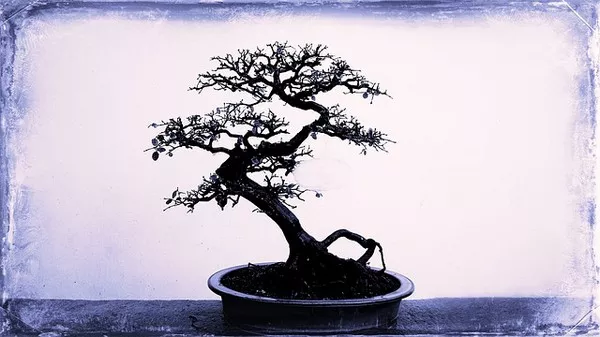Bonsai, an ancient art form originating in China and later developed in Japan, embodies the principles of patience, precision, and care. A well-maintained bonsai exhibits the perfect blend of artistry and nature, captivating enthusiasts worldwide. One essential aspect of bonsai cultivation is encouraging the growth of new branches. These branches not only enhance the beauty of the miniature trees but also allow the artist to shape the bonsai according to their vision. In this comprehensive guide, we will explore various techniques and strategies to promote new branch growth in your cherished bonsai tree.
Understanding the Growth Patterns of Bonsai
Before diving into the techniques to encourage new branches, it is crucial to understand the growth patterns of bonsai trees. Bonsai, like other plants, follows specific growth principles. The apical meristem, located at the tips of branches, is responsible for the tree’s vertical growth. When this meristem is removed or trimmed, auxin, a growth hormone, is redistributed throughout the tree, leading to lateral bud activation. These lateral buds are potential sites for new branch growth.
1. Proper Pruning Techniques
Pruning is an art in itself, and when done correctly, it stimulates new growth and maintains the bonsai’s desired shape. Regular pruning is essential to remove dead or unhealthy branches, which redirects the tree’s energy towards new growth. There are two main types of pruning:
a) Structural Pruning:
Structural pruning is performed during the tree’s early development stages to establish the bonsai’s primary branches and overall shape. Removing the apical meristem encourages lateral bud growth, leading to new branches.
b) Maintenance Pruning:
This type of pruning is carried out throughout the bonsai’s life to maintain its form and encourage finer branching. Trimming back the tips of branches to a bud facing outward stimulates growth in that direction, giving the tree a fuller appearance.
2. Pinching and Tipping
Pinching and tipping are techniques used to stimulate new bud growth in specific areas of the bonsai. Pinching involves removing the tender tips of new shoots with your fingers or pruning shears, while tipping involves using scissors to cut back growth slightly. These techniques prevent the elongation of branches and promote a denser network of fine branches.
3. Notching
Notching is a more advanced technique used to induce new branch growth at specific points on the tree. It involves making a small notch just above a bud using a sharp knife or pruning tool. The notch disrupts the flow of auxin, leading to the activation of the lateral bud below the notch. Notching is particularly useful when you want to encourage growth in a particular direction or section of the bonsai.
4. Grafting
Grafting is a more intricate method of promoting new branches, especially in cases where a bonsai lacks suitable branches in a specific area. This technique involves attaching a cutting from another compatible tree onto the bonsai. Over time, the cutting and the bonsai fuse, allowing the new branch to develop and grow.
5. Applying Bonsai Hormones
Bonsai hormones, such as auxins and cytokinins, are commercially available and can aid in stimulating new growth. Applying these hormones to the buds or pruning wounds can promote bud break and the development of new branches. It is essential to carefully follow the manufacturer’s instructions and apply the hormones sparingly to avoid any adverse effects on the tree.
6. Soil and Nutrient Management
Proper soil and nutrient management are vital for the overall health and vigor of a bonsai, which, in turn, affects its ability to produce new branches. Ensure that your bonsai is potted in well-draining soil that allows for aeration of the roots. Additionally, a balanced fertilizer should be used to provide essential nutrients for healthy growth. Avoid over-fertilization, as excessive nutrients can lead to imbalanced growth.
7. Sunlight and Watering
The right balance of sunlight and watering is crucial for encouraging new growth in bonsai. Most bonsai trees require ample sunlight, but they should also be protected from extreme heat. Adjust the amount of water provided based on the species and the climate you are in. Avoid overwatering, as this can lead to root rot and hinder new growth.
8. Patience and Observation
Patience is perhaps the most important virtue in the art of bonsai. Bonsai trees grow at a slower pace than their full-sized counterparts, and the process of encouraging new branches may take several seasons. Regularly observe your bonsai for any signs of growth or issues. Understanding the tree’s response to your techniques will help you refine your approach over time.
Conclusion
Cultivating new branches in a bonsai is a rewarding and enriching journey for enthusiasts and artists alike. The techniques mentioned above, when applied with care and attention, will enable you to shape your bonsai according to your creative vision. Remember that each tree is unique, and there is no one-size-fits-all approach to promoting new branch growth. Embrace the beauty of imperfection and allow your bonsai to evolve gracefully over time. With dedication, patience, and a deep understanding of your bonsai’s needs, you will witness the transformation of your miniature tree into a living masterpiece. Happy bonsai growing!


